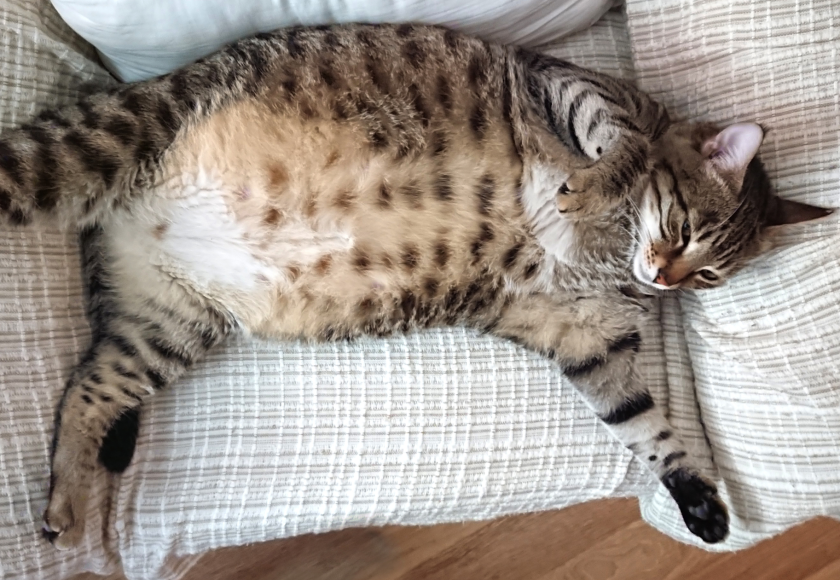Cat ticks are spider-like, egg-shaped, blood-sucking parasites. Ticks have six to eight legs (depending on their stage of life). Some species of cat ticks are very difficult to spot due to their size, which can vary from approximately 1 mm to 1 cm in length, so a tick bite on a cat may go unnoticed.
Table of contents
What should you know about tick bites on cats?
Ticks do not fly or jump, but climb or fall from grass or trees onto your cat’s coat or skin outdoors, or can be brought home on our own clothes or shoes. There are more than 800 species of ticks in the world, although only a dozen or so are associated with significant and dangerous diseases in cats.
A tick bite is not as dangerous for cats as it is for dogs, but just like dogs, ticks can transmit various infectious diseases to cats.
- Ticks bite cats in order to feed on their blood. After feeding, ticks are large enough to be noticed and feel like a small lump on your pet’s skin.
- If your cat goes outside, veterinarians recommend running your hands over your cat’s coat and body every evening when it comes in for dinner to check for small lumps or bumps.
- Ticks on cats tend to attach themselves to areas around the cat’s head, neck, ears, and paws.
- Combing also helps to remove ticks that have not yet attached themselves to the cat’s fur.
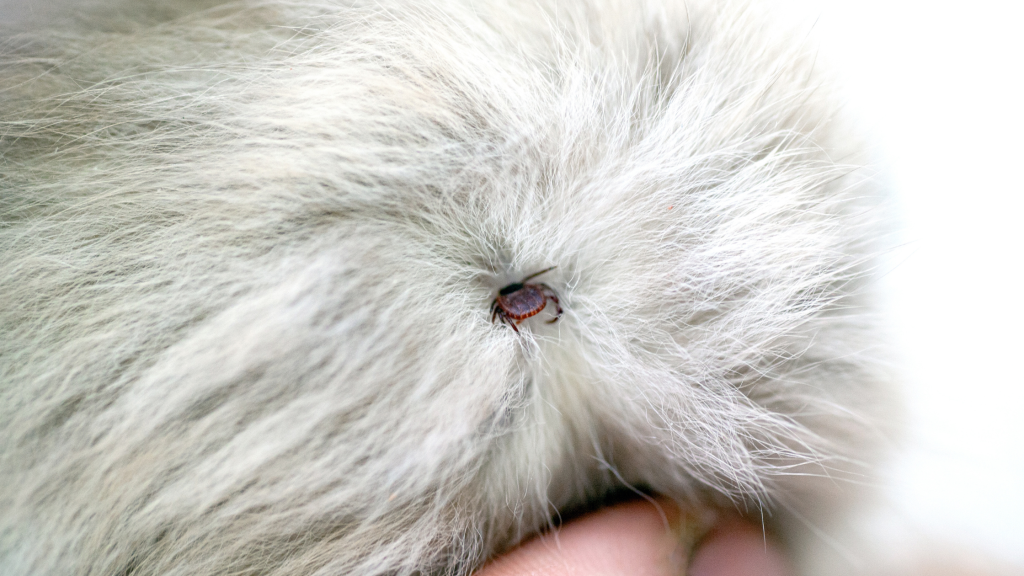
How to remove a tick from a cat?
If a tick has bitten your cat, it is important to remove it as soon as possible. The best way to remove a tick is to pull it out of the cat’s skin with a special hook, which you can purchase at veterinary clinics and pharmacies. If you do not have a special hook for removing ticks from your cat’s skin, you can also use fine-tipped tweezers. The goal is to ensure that the tick does not break and that its mouth does not remain in the bite site, which could spread infection.
- When removing a tick from your cat’s skin, it is very important to grasp it as close to your pet’s skin as possible (as close to the tick’s mouth as possible) and not to squeeze it. Spread your cat’s fur, then grasp the tick as close to the skin as possible.
- Pull straight up very gently, using slow, steady movements. Be careful not to squeeze the tick’s body and prevent its head from getting stuck inside your cat.
- If the tick does not come out when pulled, turn it clockwise several times until it loosens.
- Squeezing the tick’s body can cause it to push blood back into your pet, increasing the risk of infection, so be careful!
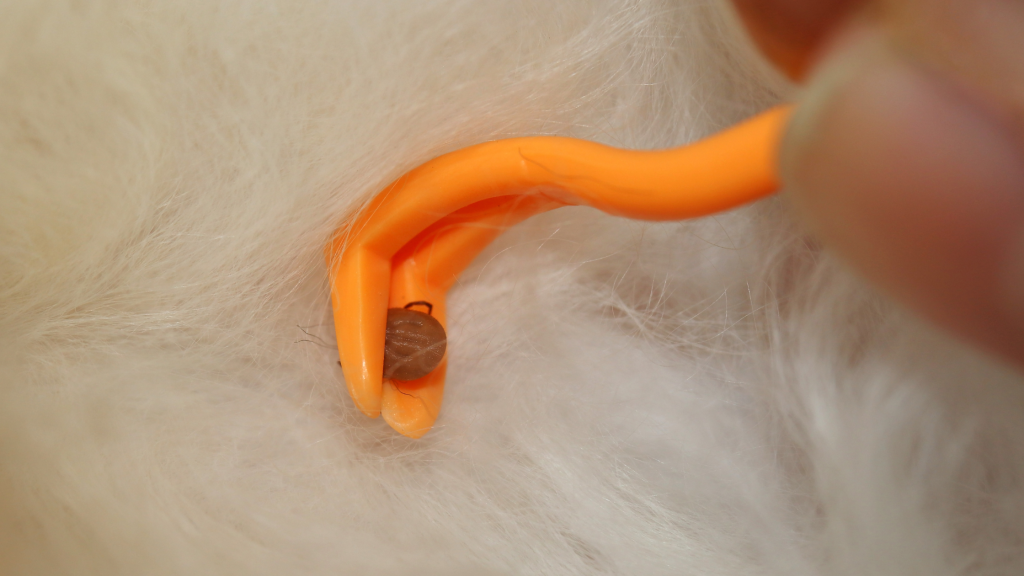
Tick-borne diseases in cats
The most well-known disease spread by ticks is Lyme disease, a bacterial infection that, if left untreated, can cause severe joint damage, heart and kidney complications, failure, or neurological dysfunction. It is very important to note that cats infected with Lyme disease after a tick bite experience stiff and/or swollen joints, lethargy, decreased appetite, and fever.
Among the more notable and potentially fatal diseases is bartonellosis, which is quite common. When a tick bites a cat, a bacterial parasite that causes bartonellosis enters the cat’s bloodstream along with the tick’s saliva. This parasite invades the cat’s red blood cells and causes severe, life-threatening anemia, the symptoms of which include pale gums, lethargy, loss of appetite, and rapid breathing and panting.
In addition to the insidious diseases mentioned above, which are transmitted to cats by tick bites, other rare tick-borne disorders such as ehrlichiosis and babesiosis may also occur. Both of these diseases can cause fever, anemia, drowsiness, loss of appetite, or weight loss.
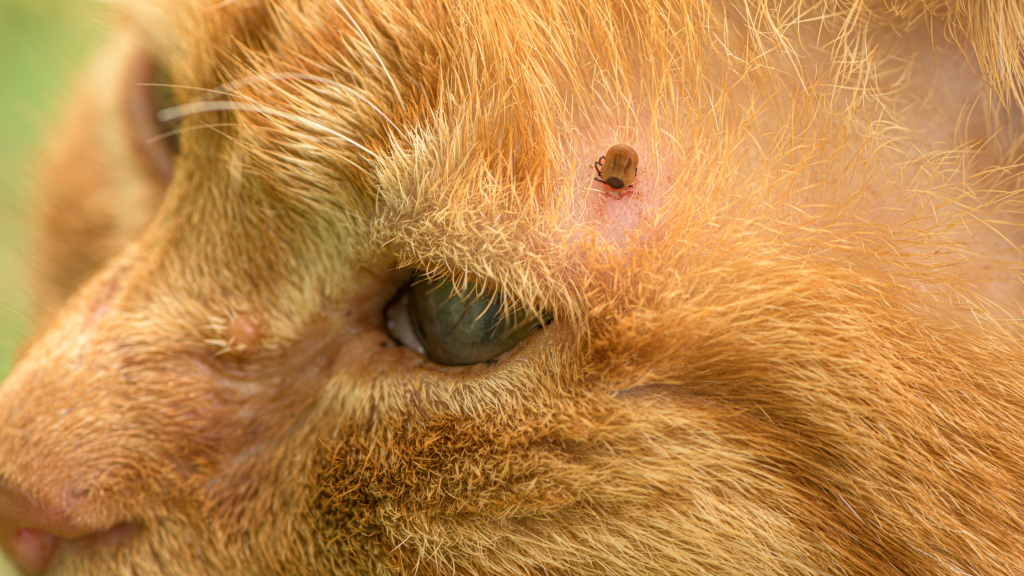
Protection against ticks for cats
There are many preventive measures against ticks available on the market. They range from over-the-counter products such as powders and collars, which have limited effectiveness, to stronger products that can only be obtained from a veterinarian.
Drops for cats against ticks
One of the most convenient and effective products is a preventive measure against fleas and ticks for cats in the form of drops that need to be applied locally to the skin on the neck. Most protective drops are effective for up to 4 weeks. When choosing protective drops, it is very important to check their composition. Herbal preparations do not protect against ticks and the diseases they carry!
Only drops selected according to the animal’s weight, whose active ingredients paralyze and kill the attached tick, protect dogs and cats from ticks and the diseases they carry. Veterinarians at Begemotas remind us that when choosing protective drops, it is very important to remember that the active ingredients in the drops enter the animal’s bloodstream through the sebaceous glands in the skin, so dogs and cats should not be bathed with shampoo 72 hours before and after application.
Before choosing the most suitable drops for your cat to protect against ectoparasites, consult your veterinarian. Modern veterinary medicine offers several different solutions for your cats to protect them not only from ticks, but also from gastrointestinal parasites.
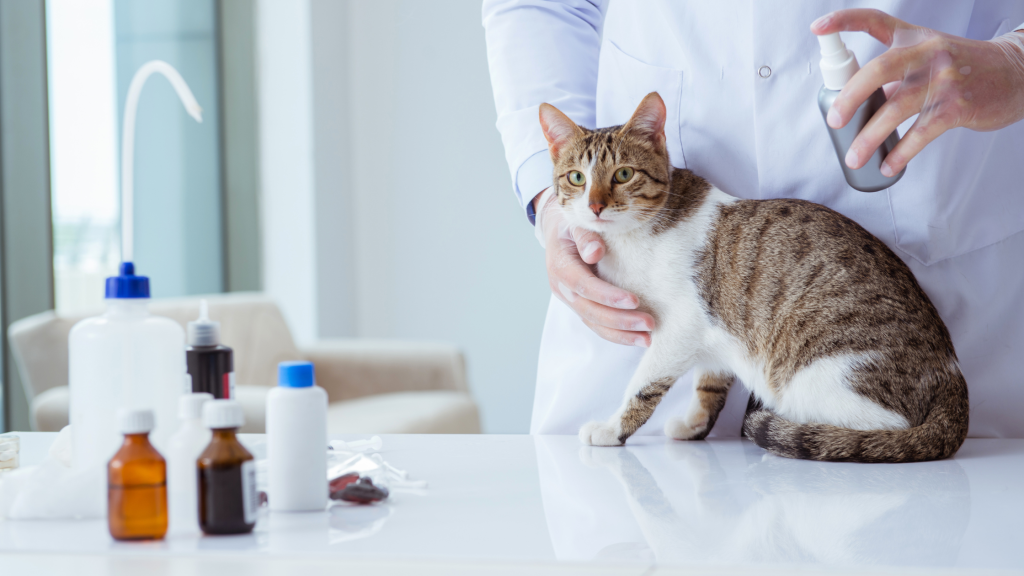
Tablets for cats against ticks
Tablets for cats are usually effective for about 1 month, just like drops. Tablets for cats can be used to treat ectoparasites or for prevention, but many cat owners have trouble getting their cats to take them.
It is important that cats are never given flea and tick protection products intended for dogs, as these can be toxic and cause various neurological seizures and damage internal organs in cats.
Why should you visit a veterinary clinic?
A veterinarian at the Begemotas Veterinary Clinic will provide specific recommendations on how to protect your cat from external and internal parasites. Veterinarians remind us that if you have any suspicions or concerns about your pet’s health related to the diseases mentioned above, you should contact a veterinary clinic as soon as possible.
At the Begemotas veterinary clinic, all patients are carefully examined, all necessary tests are performed, and appropriate treatment is prescribed. A tick bite is not a pleasant experience for a cat, so let’s take care of our pets together, and remember that prevention is better and healthier than treatment.





